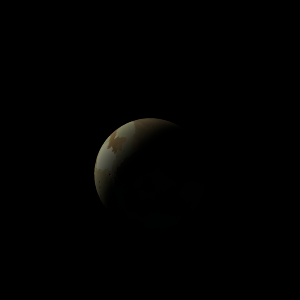|
|
Space Astro
|
Info for exoplanet "Abipijo-tuju"
| Scientific (actual) data |
|---|
| Name | Kepler-321 b |
| Planet status | Confirmed |
| Radius | 0.158 |
| Orbital period | 4.91538 |
| Semi major axis | 0.057 |
| Discovered | 2014 |
| Updated | 2021-02-05 |
| Tconj | 2454970 |
| Impact parameter | 0.06 |
| Publication | Announced on a website |
| Detection type | Primary Transit |
| Alternate names | 2MASS J19374888+4408447 b, K01809.02, KIC 8240797 b, KOI-1809 b, KOI-1809.02, WISE J193748.89+440844.8 b |
| Star name | Kepler-321 |
| Right ascension | 294.45° |
| Declination | 44.15° |
| Mag j | 11.621 |
| Mag h | 11.3 |
| Mag k | 11.249 |
| Star distance | 388.83 |
| Star mass | 1.01 |
| Star radius | 1.19 |
| Star temperature | 5740 |
| Star alternate names | 2MASS J19374888+4408447, KIC 8240797, KOI-1809, WISE J193748.89+440844.8 |
| Wikipedia article | Kepler-321 b |
Back
| |
| Fictional info (?) |
|---|
| Suggested name | Abipijo-tuju |
| Planet type | Hot planet |
| .
The two polar ice caps appear to be made largely of ice. |
| Atmosphere | Formaldehyde | 58% |
| Molecular hydrogen | 20% |
| Krypton | 16% |
| Carbon monoxide | 5.7% |
| Ethane | 0.056% |
| Atmospheric pressure | 0.0015 bar |
 |
| No known satellites |
| Google search for Abipijo-tuju |
|
Website by Joachim Michaelis
|
|
|
|